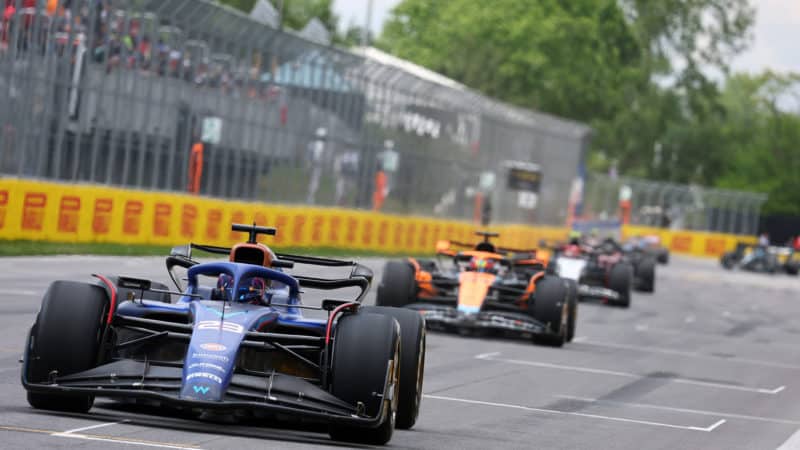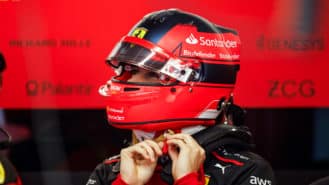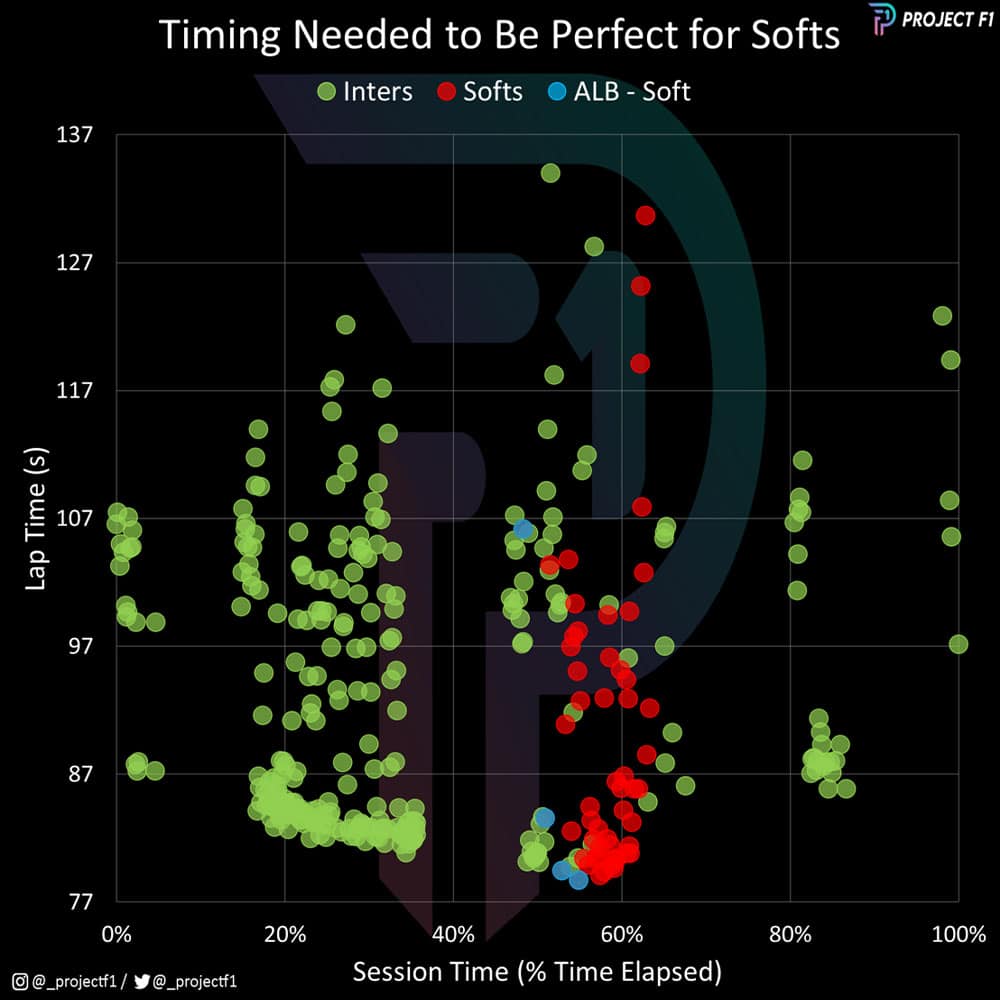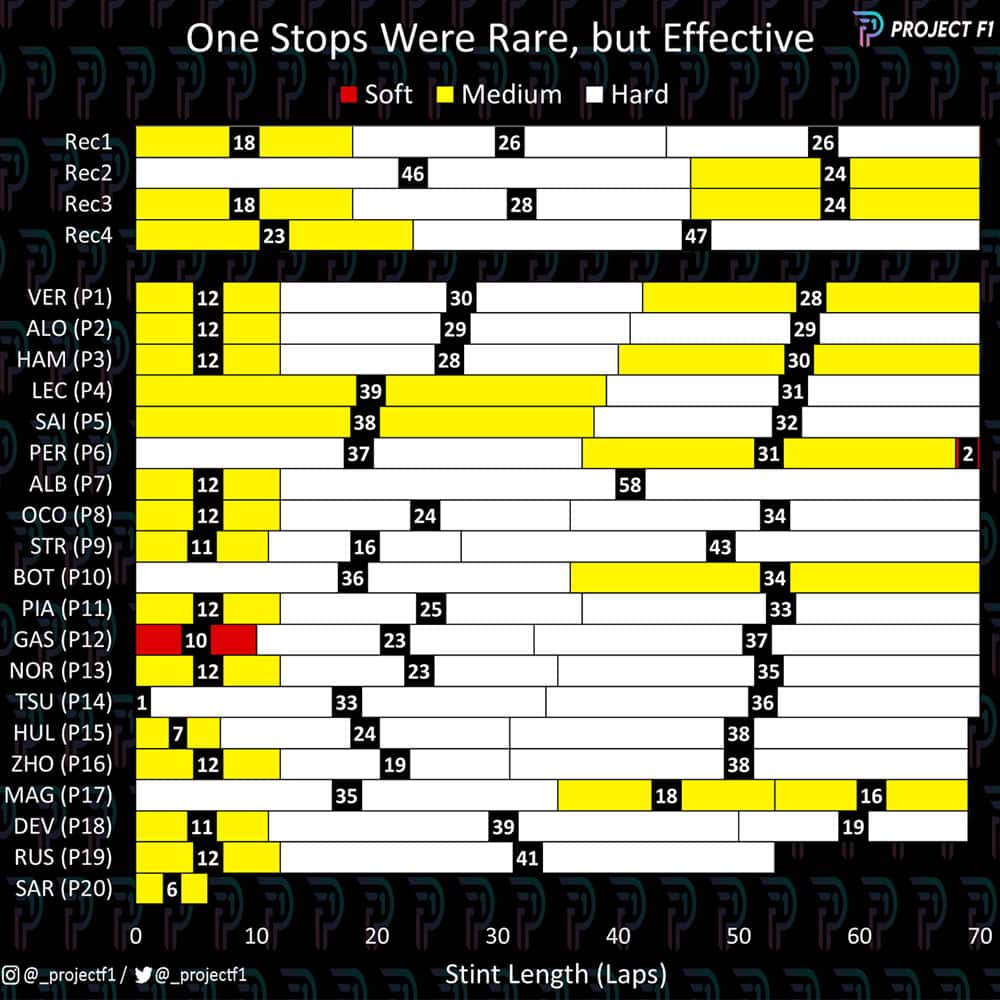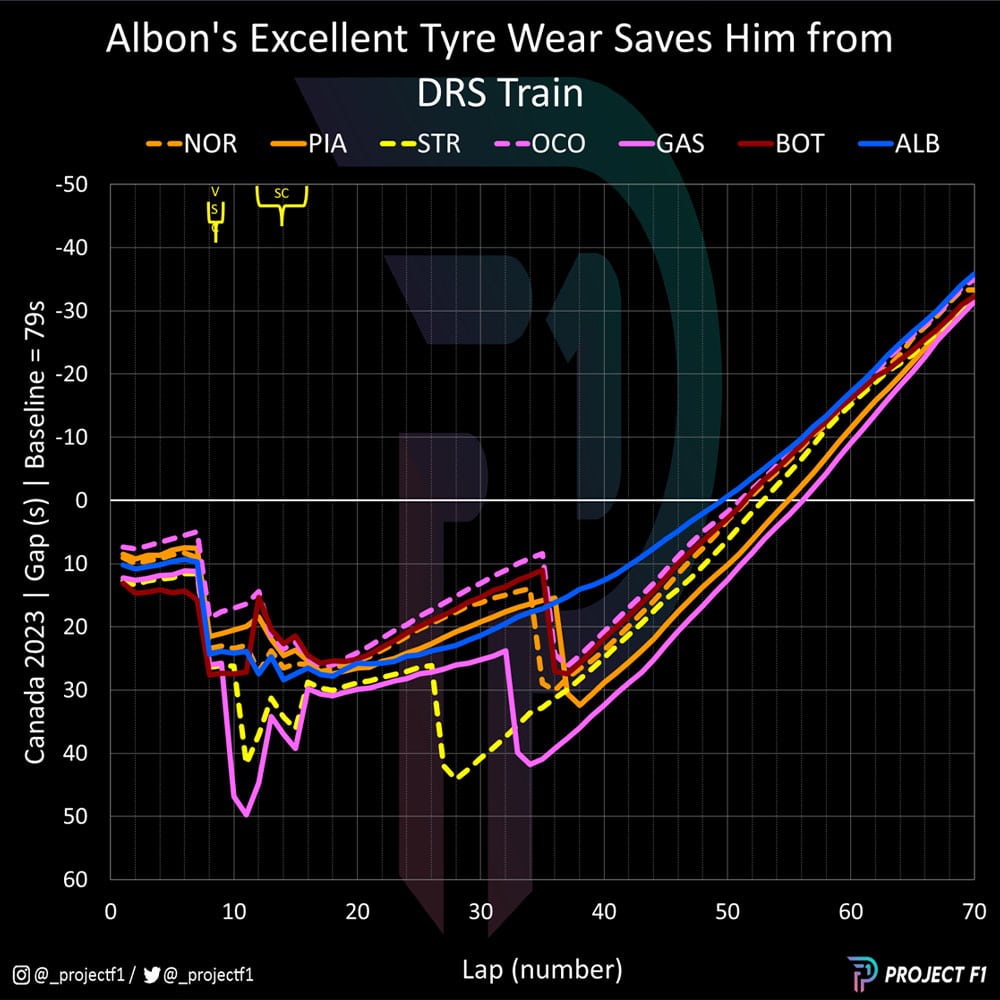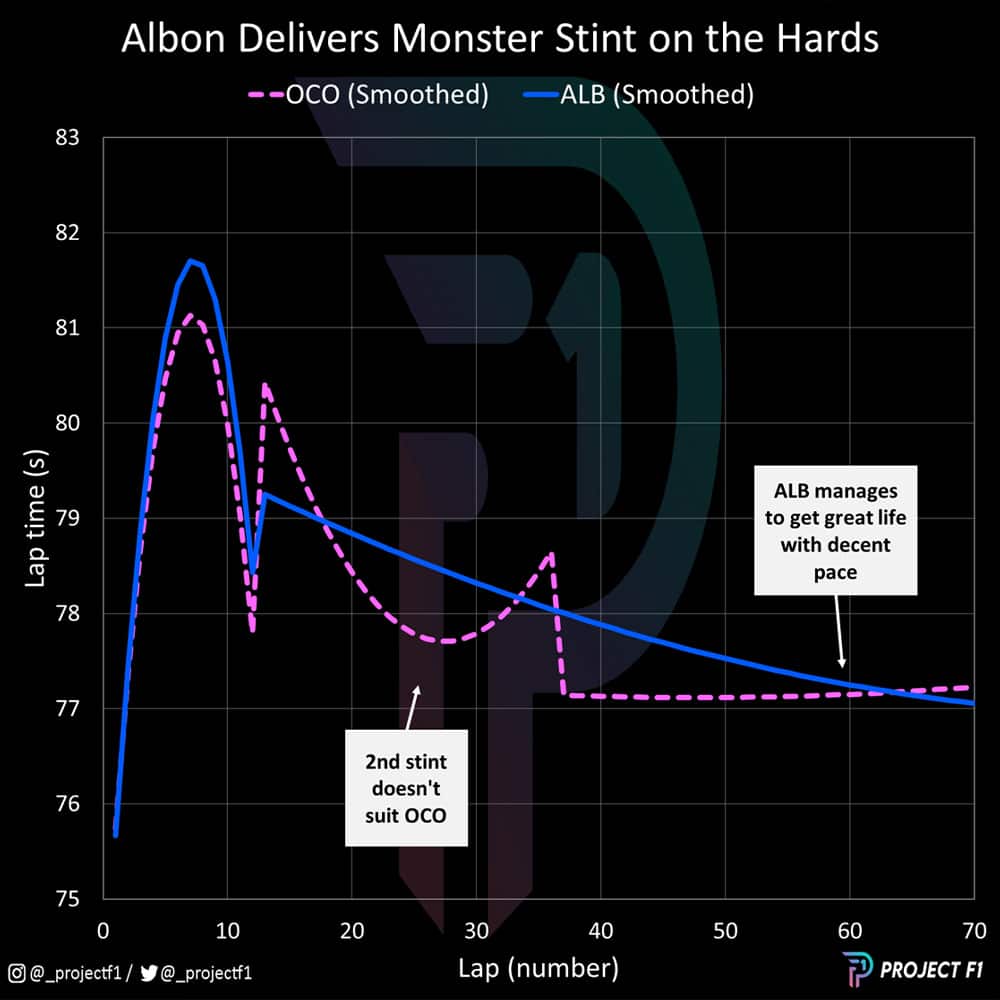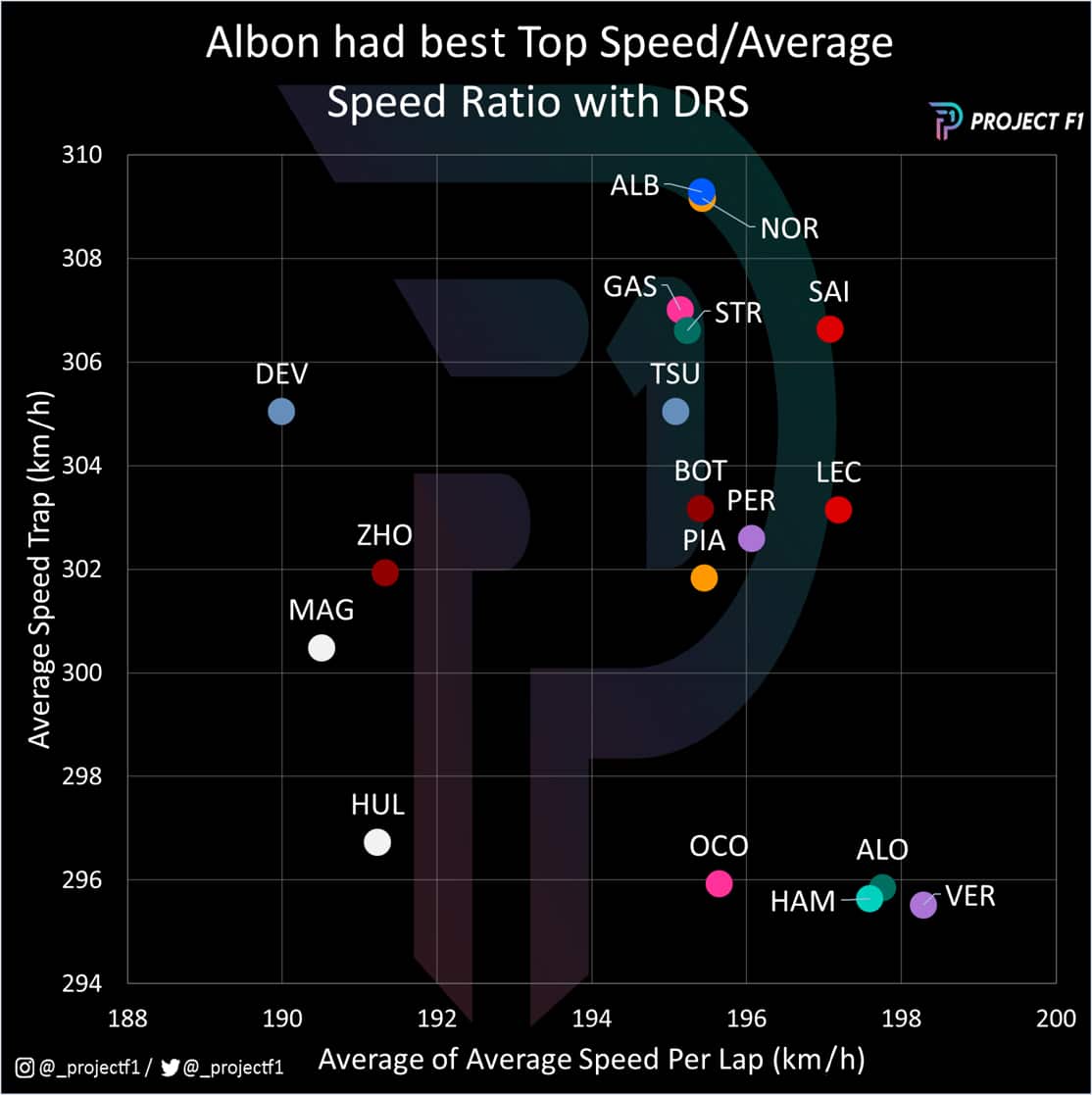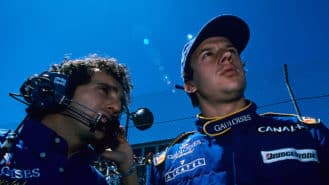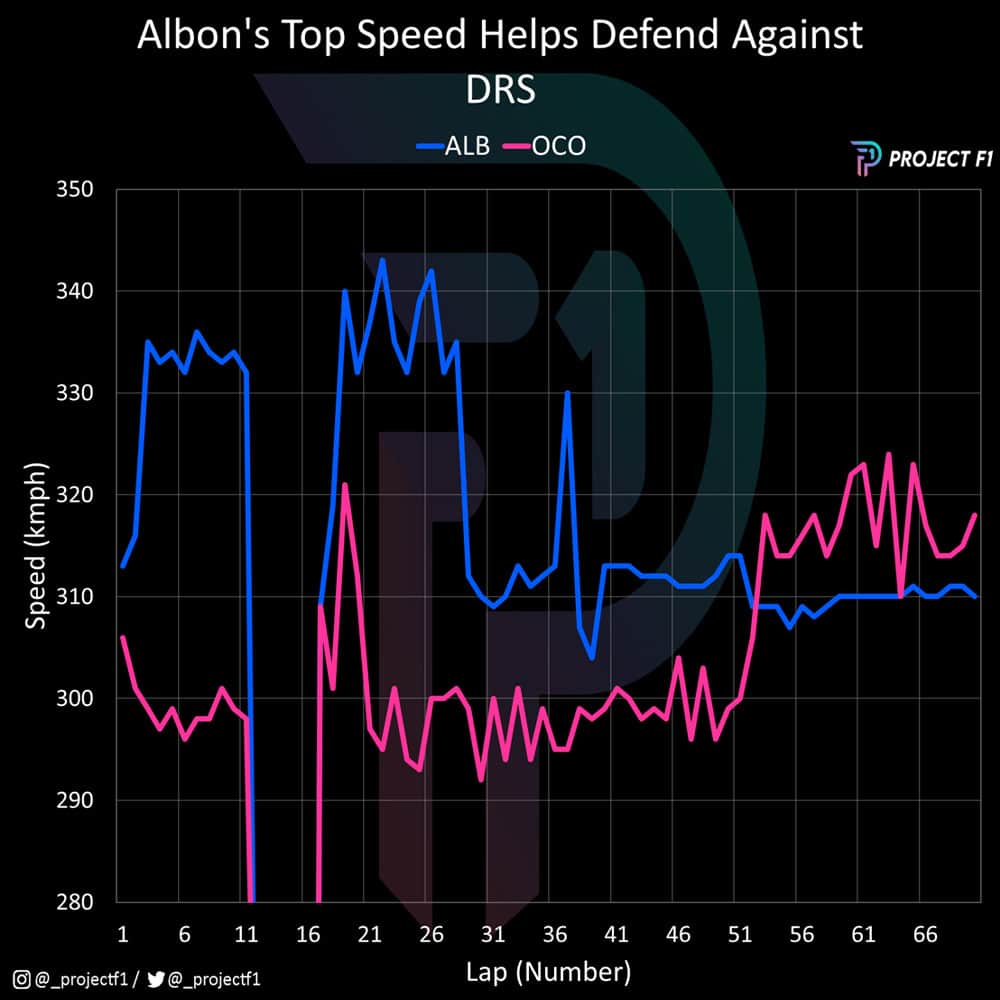The team’s 2023 design philosophy has centred around having a ‘slippery’ car — that’s very fast in a straight line relative to its competitors. Unlike the Red Bull – another car with superior top speed – the Williams lacks aerodynamic efficiency, meaning it struggles for pace through corners.
As such, circuits that require varied performance windows prove challenging for the Grove machines, but Montreal doesn’t fall into this category. It’s essentially made up of two long straights, punctuated by chicanes and slow hairpins, playing to the Williams’ straight-line strengths.
For the team to take advantage of this, a good qualifying spot was crucial. On a drying track, with rain on its way, Albon’s brilliance behind the wheel came into play. The Williams driver was first to switch to soft slicks in Q2. As Chart 1 shows, they began to outperform the intermediates at certain parts of the track.
Albon had a few laps to find grip while building tyre temperature. This placed him in the perfect window to set a hot lap for when the soft tyre suddenly became overwhelmingly faster than the intermediates – his Q2-topping time was 0.6sec faster than anyone else.
As illustrated, not long after the conditions then started to turn back towards the intermediates.
Narrow window for soft tyres
Chart 2 Q2 lap times by tyre compound
No-one was able to maximise the opportunity to use their slick tyres quite like Albon did. Chart 2 plots each driver’s lap times throughout the session, based on the tyre they were running. Albon’s slick-tyred laps are shown in blue, with other drivers’ soft-tyred times in red, and intermediate laps in green.
As soon as the Williams driver set his 1min 18.725sec Q2 hot lap (the fastest lap of the qualifying session) the track conditions started to deteriorate as shown by the upward trend in the red dots.
Not even Verstappen, with all the might of the Red Bull, could match Albon’s performance. This put Albon through to Q3, where he bagged an eventual starting slot of P9 for the race.
Canadian GP race
Tyre life key to Williams strategy
Chart 3 Tyre strategies
The potential for Williams to then score points in the race mainly revolved successfully executing a one-stop strategy and maintaining track position.
As Chart 3 shows, with the tyre strategies for each driver, underneath the four recommended by Pirelli, this is exactly what Albon did.
When George Russell hit the wall on lap 12, several drivers took the opportunity to come in for tyres under the safety car. Going for a one-stop from lap 12 was aggressive even by Pirelli’s estimations, but Albon managed to look after his tyres for 58 laps and make it work. No other driver on a successful one-stop strategy stopped anything like as early.
One-stop saves Albon from DRS train
Chart 4 Cumulative delta plot
Just how successful Albon’s one-stop approach was is reiterated in Chart 4. The cumulative delta plots each driver’s average lap time, updated for every lap of the race, and set against an average 1min 19sec lap time.
After losing out in a battle for position with Piastri in the laps following the safety car restart, Albon’s race began to find a rhythm.
Taking a close look at laps 34-36 shows that Albon began closing in on Piastri again, with the Williams faring well in traffic. Piastri then pitted, as did the likes of Ocon, Bottas and Norris, gifting Albon clean air and allowing him to put some distance between himself and his peers.
Albon keeps Ocon at bay
Chart 5 Trend race pace
Chart 5 above provides some extra analysis on the pace differential between Albon and Ocon; the Alpine behind the Williams from lap 54 to the end of the race on lap 70.
